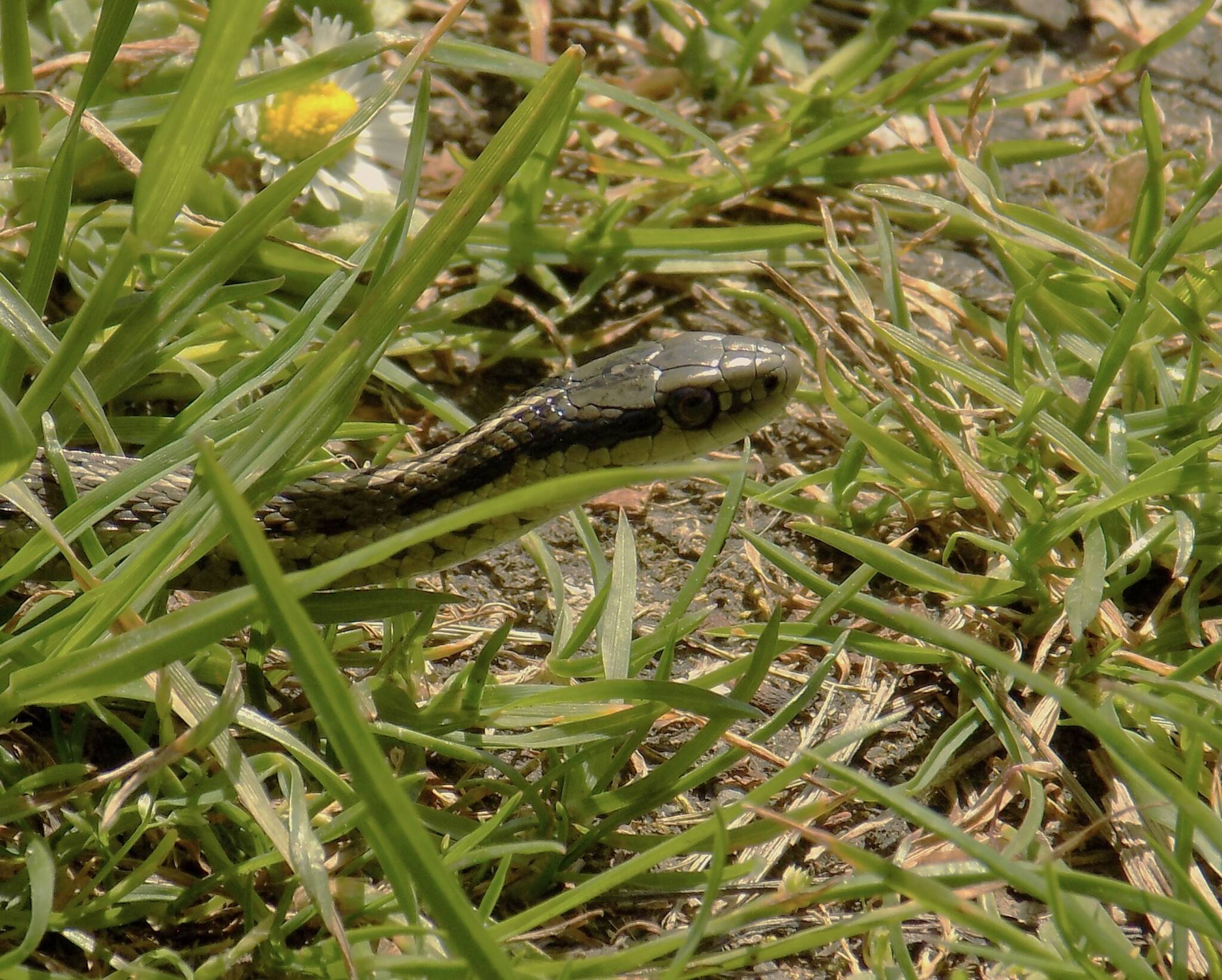By Russel Barsh
Director, KWIAHT
An olive-green snake slips into the water and disappears beneath the kelp…
Viewers of David Attenborough’s Planet Earth III, Episode 1, were treated to scenes of a snake hunting small fish in a shallow rocky reef at Saturna Island. In actuality, much of the research on this unusual snake behavior was conducted here in the San Juan Islands by Kwiaht herpetologist Christian Oldham in 2022, with funding provided by the BBC.
The “wandering” garter snake (Thamnophis elegans vagans) is not only the largest native snake of the San Juan and Gulf Islands, capable of growing to more than three feet; it routinely swims ponds and lakes, feeding on fish, frogs, and perhaps an occasional duckling. Sporadic reports of these snakes entering salt water culminated a few years ago in videos of a garter snake fishing in tide pools at Saturna Island.
BBC producers were intrigued. They contacted Kwiaht to learn whether this kind of behavior is typical of garter snakes in the islands. We did not have an answer. What followed was a season of observing beaches, setting out infrared-triggered cameras, and conducting experiments in a specially-designed saltwater tank where snakes were offered the opportunity to dive after tide pool fish such as sculpins and gunnels.
The shore observations were frustrating; twice, a wandering garter snake was seen heading up a beach after presumably hunting along the tideline, or below the tide. Tank experiments were far more informative: randomly collected island snakes that dove in without hesitation, catching and eating the fish offered. In other words, fishing in salt water is “wired into” the island population of this species. Given the opportunity, they will hunt in saltwater as readily as freshwater.
What does this all mean for our island ecosystem?
The fact that our largest native snake can make its living fishing is a significant advantage in the islands, which have a very high ratio of shoreline to land area. Our most successful omnivorous wild mammals are also at least partly reliant on marine resources: raccoons, otters, and minks. At least two of our bat species have adapted to hunting insects over salt water, moreover. Even our diminutive island deer, while they rely almost entirely on terrestrial plants, have been seen swimming from island to island in search for greener pastures (and mates). In a future of rising sea levels and stormier winters, wildlife that swim and take advantage of nearshore resources will enjoy a distinct advantage.
Marine-adapted wildlife are especially relevant to the hundred or so small, uninhabited islands that are scattered throughout our archipelago. They are not solely the domain of seabirds. Our team has found garter snakes roaming many of them, together with beetles, slugs and snails for these seafaring reptiles to eat when they are not munching fish. On small islands, garter snakes can play a relatively greater ecological role than they do on the larger islands where they must share resources with more landlocked predators.



